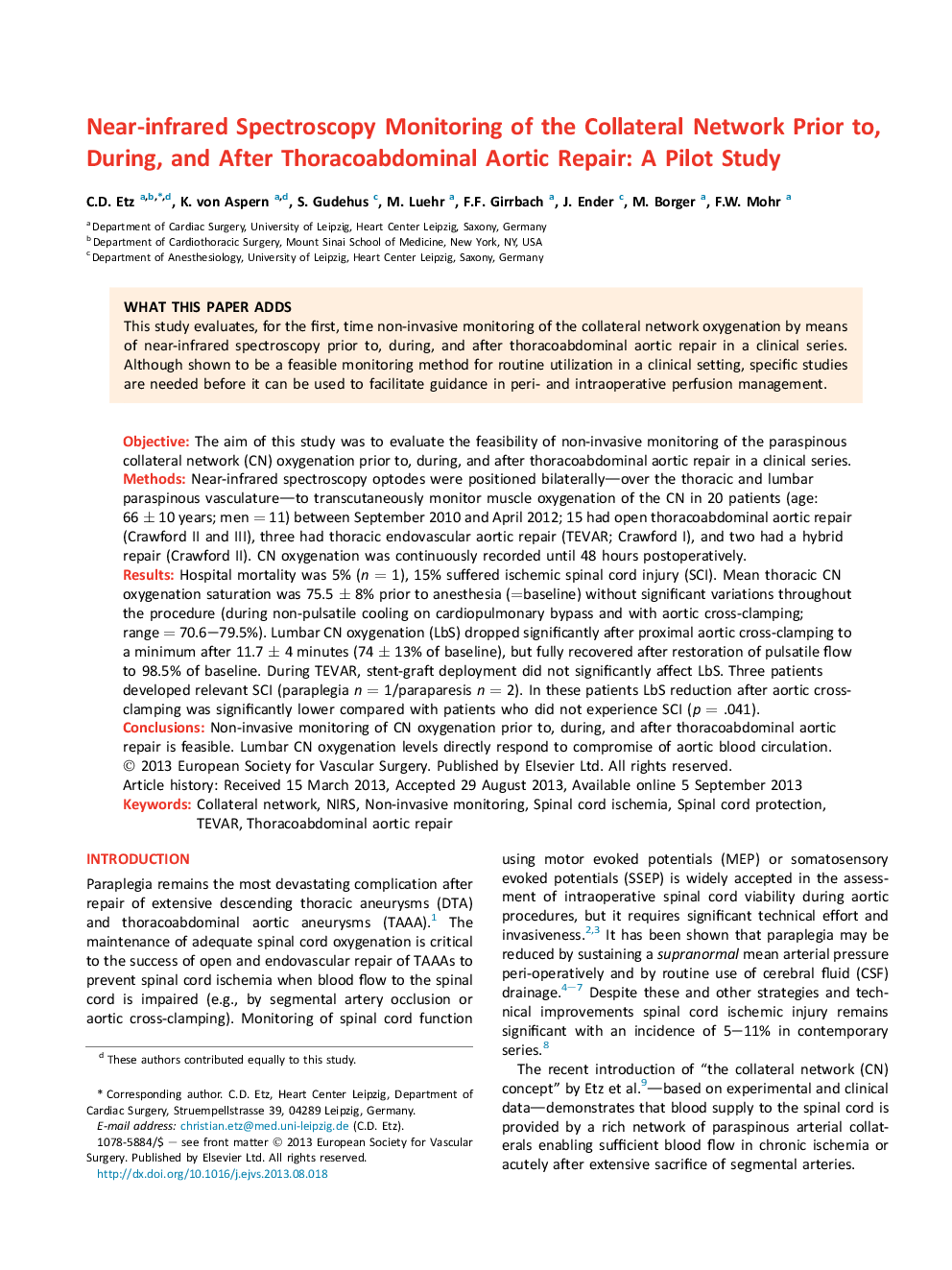| کد مقاله | کد نشریه | سال انتشار | مقاله انگلیسی | نسخه تمام متن |
|---|---|---|---|---|
| 2912484 | 1575459 | 2013 | 6 صفحه PDF | دانلود رایگان |

ObjectiveThe aim of this study was to evaluate the feasibility of non-invasive monitoring of the paraspinous collateral network (CN) oxygenation prior to, during, and after thoracoabdominal aortic repair in a clinical series.MethodsNear-infrared spectroscopy optodes were positioned bilaterally—over the thoracic and lumbar paraspinous vasculature—to transcutaneously monitor muscle oxygenation of the CN in 20 patients (age: 66 ± 10 years; men = 11) between September 2010 and April 2012; 15 had open thoracoabdominal aortic repair (Crawford II and III), three had thoracic endovascular aortic repair (TEVAR; Crawford I), and two had a hybrid repair (Crawford II). CN oxygenation was continuously recorded until 48 hours postoperatively.ResultsHospital mortality was 5% (n = 1), 15% suffered ischemic spinal cord injury (SCI). Mean thoracic CN oxygenation saturation was 75.5 ± 8% prior to anesthesia (=baseline) without significant variations throughout the procedure (during non-pulsatile cooling on cardiopulmonary bypass and with aortic cross-clamping; range = 70.6–79.5%). Lumbar CN oxygenation (LbS) dropped significantly after proximal aortic cross-clamping to a minimum after 11.7 ± 4 minutes (74 ± 13% of baseline), but fully recovered after restoration of pulsatile flow to 98.5% of baseline. During TEVAR, stent-graft deployment did not significantly affect LbS. Three patients developed relevant SCI (paraplegia n = 1/paraparesis n = 2). In these patients LbS reduction after aortic cross-clamping was significantly lower compared with patients who did not experience SCI (p = .041).ConclusionsNon-invasive monitoring of CN oxygenation prior to, during, and after thoracoabdominal aortic repair is feasible. Lumbar CN oxygenation levels directly respond to compromise of aortic blood circulation.
Journal: European Journal of Vascular and Endovascular Surgery - Volume 46, Issue 6, December 2013, Pages 651–656